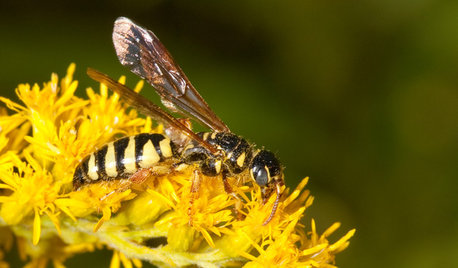Okay, so we're coming up on insect damage season in Indiana. Some parts of the country are already getting hit pretty hard. Figure I'd post a few tips for anyone that is new and could end up losing plants or experiencing depressing yields due to inexperience with a little prevention/control knowledge.
A few tips:
1) Aphids spread disease. They also squish easily. If that grosses you out, wrap masking tape around a couple fingers and rub the infested areas. Masking tape is less likely to rip your plants' leaves up than duct tape (yep, made that mistake once).
2) Flea beetles will eat up an eggplant in short order. They leave a bunch of little holes. Take a piece of cardboard, like from a cereal box, or cut out the side of a milk jug and spread something really sticky on it. Be generous with the sticky stuff. Use at least a 4x4 inch piece. There are lots of sticky materials you can use. I use Tree Tanglefoot. Once that's on the cardboard/plastic, hold it under the plant with the sticky side up. You would do well to make a few to place around the base of the plant and cover most the ground/medium surface. Next, shake the plant a little. The flea beetles will start falling and jumping off to the ground below.
3) Man I hate those damned bean beetles. You can use the above method, but sometimes they don't stick as easily. Another way of catching things is to put a little dish soap in some water in a small container. I usually use a small butter bowl. The surfactant properties of the soap will allow the bugs to go into the water rather than float due to high surface tension. Next, just hold the bowl under the plant where the beetle is. As you approach it, it will usually just fall off to the ground as an escape measure. If you try to just use a cupped hand to catch them, they can jump off your hand pretty quick. This works for cucumber beetles, too.
4) Squash bugs. . . I always say these bugs are aptly named because they need to be squashed. One way to combat these is to be proactive. Look for little eggs on the undersides of the leaves. Use a knife or something to scrape them off in the soapy solution I described above. Some people even say just to cut that portion of leaf off so that you don't accidentally send the eggs flying and give them a chance to hatch. The damage you cause the leaf is nothing like the damage the squash bugs do to a plant.
5) Tree hoppers are those cool looking little bugs that look like they have horns or armor. Google the images and you'll see what I mean. They tend to damage plants by chewing on the veins. One tell tale sign, for example, is when you have a huge eggplant leaf that is sharply bent halfway up the leaf. The bugs just severed that main vein. These guys are pretty easy to find if you look under the leaves. Use the soapy water dish here, too.
5) You can use a neem spray as a preventative, but the effectiveness is questionable and it won't last past the rain. It can damage some plants that are sensitive to neem, so be careful and only spray a small portion the first time. Also, don't spray during the heat of the day. Neem will also help to prevent some fungi. Be aware that neem is very bad for aquatic life. Don't spray it near your pond/aquarium. I've read that cold pressed is the way to go if you mix your own up. Use coco wet as a surfactant to get the neem to stay on the plant rather than just roll off due to the waxy cuticle. Plus, it helps the neem mix in the water for more even application.
6) If your plants are infected with a fungus, don't go willy nilly with the gardensafe or your own neem concoction. That is what is called a revenge application. You are largely wasting your time. Neem products work as preventatives, but suck for turning the tide unless it's powdery mildew. Powdery mildew is probably the easiest fungus to control. I'm talking about the ones like leaf spot. Anyway, copper might work or a bordeaux mix (copper/sulfur/hydrated lime). Lots of people stand by mixing a cup of 3% peroxide in a gallon of water and spraying leaves. I've never tried it and haven't read any real research on the subject, so I can't vouch for it. Unfortunately, prevention is the key and if you already have a bad infestation, you might have to face some sad music. If you have a plant that shows signs, get rid of the material that has the damage and start working to control potential spread. Hopefully spores haven't gotten a foothold on other plants, yet.

















ethnobotany
joe.jr317Original Author
Related Professionals
70037 Landscape Architects & Landscape Designers · Glassmanor Landscape Architects & Landscape Designers · Saint Charles Landscape Architects & Landscape Designers · Davis Landscape Contractors · Dedham Landscape Contractors · Firestone Landscape Contractors · Lady Lake Landscape Contractors · Leicester Landscape Contractors · Peoria Landscape Contractors · Petaluma Landscape Contractors · Round Lake Landscape Contractors · Setauket-East Setauket Landscape Contractors · Wethersfield Landscape Contractors · Whitehall Landscape Contractors · Whittier Landscape Contractors